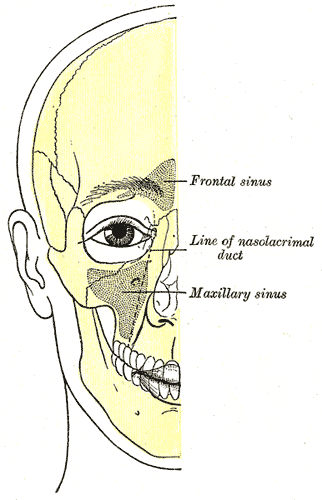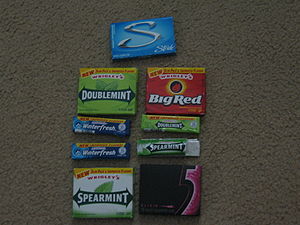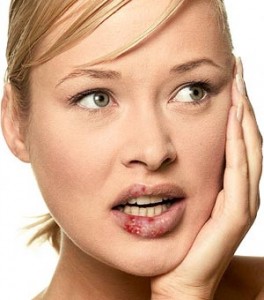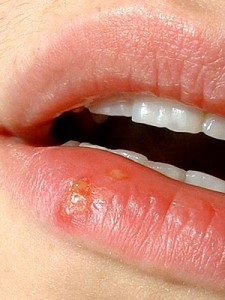Everybody will experience dental pain of some sort at some point in their life. When pain occurs at the region around your cheeks, you could bet that it is most likely due to some dental problems; or perhaps probably some gum related disease. However, it does not necessarily mean that teeth/gums problems are always the cause of pain in the cheek region, thus in this article, we’ll discuss about one of the possible indirect cause of toothache – through sinus infection. Continue reading
Yearly Archives: 2010
How do I know if my baby is tongue tied?
Any irregularities of the tongue may affect the movement of the organ, which can result in speech or feeding difficulties. The most common problem affecting the tongue is tongue tie or medically known as ankyloglossia. It can occur with different degree of severity which may or may not be related to functional disability of the tongue. Some children or babies have no problems with eating or drinking while some others do. Continue reading
How to differentiate milk and thrush in a baby mouth
 What is thrush in general
What is thrush in general
- Thrush is an infection caused by a yeast which is a small living fungus called candida.
- Most people have candida on their skin, in their mouths (oral thrush) , in the genital region and in their gut most of the time without having any problems from it.
- Babies and young children can get thrush in the mouth and on the skin, when occurring on the skin it is called as a nappy rash.
- Breastfeeding mothers can also get thrush on their nipples, causing pain when feeding. This is often caused by the transmission of candida from the baby’s mouth to the mother’s nipple or the other way round.
- Women can get thrush in the vagina, with itchiness and a discharge. Continue reading
How Vitamin B12 deficiency causes Canker Sore
What are canker sores?

Canker sore
Canker sore also known scientifically as aphthous ulcer, is a common type of ulcer found in the mouth, gums, sometimes the upper throat region. It usually involves the breaking down of mucosal surface, which is the inner lining of the mouth, and this exposes the underlying tissue, leading to immense pain especially with contact or movement.
What are the oral signs and symptoms of canker sores
Depending on the size of the ulcers, they can be categorized under minor or major aphthous ulcers. Minor ulcers are anything less than 1cm in diameter while major ulcers extend beyond 1cm in diameter and can be extremely painful. They both usually have a yellow or whitish base where the tissue is exposed and a fiery red border is found around the ulcer. Minor ulcers usually only takes a few days up to a week to heal and major ulcers take much longer, sometimes up to two weeks. Minor ulcers can coalesce to form one big ulcer in which healing will again be delayed. Multiple small ulcers found in a cluster are usually herpetic form of ulcerations with a viral origin. Continue reading
Can xylitol reverse tooth decay?
WHAT IS XYLITOL?
Xylitol is a naturally occurring sugar which is found in various fruits and berries such as strawberries,raspberries and plums. It is also known as “birch sugar” as it can be extracted from birch wood. Xylitol,when consumed, has the potential of reducing dental decay. On the other hand, sucrose (also found in fruits but with a higher sugar content), is a highly cariogenic sugar, meaning it yields high levels of acid upon fermentation. Therefore, substitution of sucrose with xylitol has the benefit of reducing the occurrence of dental decay. Continue reading
Cold Sores and Alzheimer’s Disease
Recently there have been studies that link the Cold Sore virus to Alzheimer’s disease. Cold sores are already an embarrassing problem by itself and to discover that the viral infection is linked to a mental condition gives us another splitting headache. Before we go into the connection between the two, let us go through the basics of both conditions.
What are cold sores?
Cold sores, fever blister or medically termed as herpes labialis is a common viral infection that affects Americans every year which appear as fluid-filled blisters or sores found on the lips or around the mouth. They are not an inherited condition and are caused by the reactivation of the latent herpes simplex virus in the nerves after primary herpes infection by certain triggering factors.
Cold sores are contagious and they can spread through saliva and direct contact with sores. Most cold sores will heal by themselves within one week to ten days but medications may be prescribed by your doctor if the condition is uncomfortable and unsightly. Continue reading
5 Ways on How to Avoid Catching Cold Sores
Viral infections are very common among Americans for they are readily transmitted by saliva and other bodily fluids. The herpesviruses are the most frequent cause of viral infection in the mouth and herpes simplex virus (usually type 1) is the one responsible for cold sores.
What are cold sores?
Cold sores, fever blister or medically termed as herpes labialis is a common viral infection caused by the reactivation of the latent herpes simplex virus in the nerves after primary herpes infection. They are usually fluid-filled blisters or sores found on the lips or around the mouth and are not an inherited condition. Sometimes sores can appear on the chin, cheeks, in the nose or inside the mouth.
Cold sores can be mistaken as canker sores, another common oral condition, but both are very much different in their tendency to recur, in number and in duration. Canker sores are not caused by virus and are not contagious. Continue reading
Common Questions asked about baby’s erupting teeth
 What is teeth eruption
What is teeth eruption
- Teeth eruption is the process during which teeth grow through the jaw bone and pierces the gum and the tooth enters into the mouth.
- Teeth eruption happens for both baby teeth eruption and permanent teeth eruption.
- Teeth eruption occurs all throughout our lives, this is because teeth in the mouth are always moving and never stagnant. However, the movements are of course very small. Continue reading
How to Clean a Baby’s Tongue
Oral hygiene practices are not limited only to adults but are important to children and babies as well. According to the American Academy of Pediatric Dentistry, a child should have his or her first visit to the dentist approximately at the time of eruption of the first tooth (usually between 3 to 9 months) or by the age of 12 months the latest. When the child has special needs, this visit can be done earlier.
A child should have a few basic oral hygiene procedures during the first year of life for there is a general agreement among dentists that removal of plaque should begin as soon as the first baby teeth erupt. The parent plays an important role in this early cleaning to keep the baby’s mouth healthy. Cleaning and massaging the baby’s gums before the baby teeth erupt can help in establishing a healthy oral flora and help the process of teething. Therefore, even though your baby does not have any teeth yet, it does not mean that you do not need to keep his or her mouth clean. Continue reading
How do baby’s teeth grow?
 This diagram shows the first baby teeth growing in the mother’s uterus
This diagram shows the first baby teeth growing in the mother’s uterus
So, how do baby’s teeth grow ? The baby teeth actually starts growing during the 6th week in the mothers uterus. These baby teeth growth starts with the Bell shape tooth germ. This Bell shape structure seen is actually the enamel organ, which will eventually grow into a baby teeth. As you can see the enamel organ or tooth germ contains numerous cells. These cells will continue to grow and differentiate into different and more advance cells to form the tooth. The outer and inner enamel organ eventually forms the outer casing of the tooth called the enamel layer. Where else the dental papilla cells will form the inner section of the tooth known as the pulp chamber. The permanent tooth bud will continue to grow into the permanent teeth after the baby tooth eruption is completed in the mouth.





